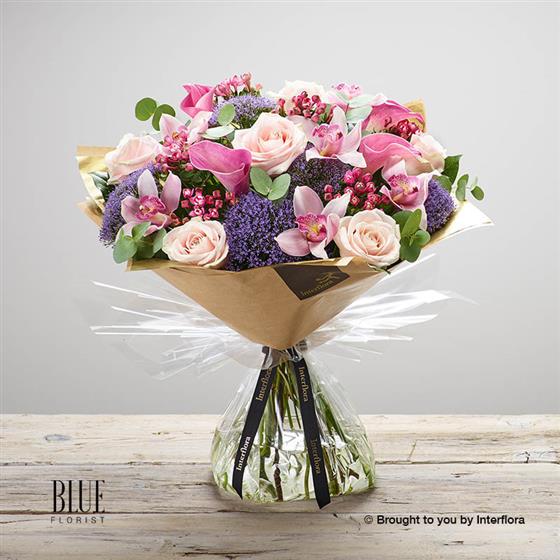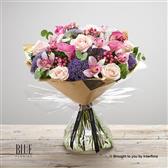.jpg?ver=8476)
.jpg&ver=8476)
If you regularly buy cut flowers, you may know that it’s good practice to trim the stems. But why, how, and how often should you do this?
What Do You Need to Know About Trimming Cut Flower Stems?


Why should you trim flower stems?
Even if you know that you should trim your cut flowers, it can sometimes be tempting to just pop them in a vase and hope for the best. After all, what difference can trimming really make? The thing is, the answer is actually ‘quite a lot.’ And when you’ve invested in a beautiful hand-tied arrangement, like Apricot Rose, you want it to last as long as possible.
What are the benefits of trimming flower stems?
- Flowers last longer. And that’s really important, especially if you’re shopping at the higher end of the market. When you trim the stems of a cut flower arrangement, change the water regularly, and add flower food, blooms can actually last for as much as a week to 10 days longer.
- The flowers look better. When flowers spend any time out of water, the stems begin to dry. Which means that when you return them to a vase, they can no longer take up the water they need. This will lead flowers like these gorgeous red roses to lose their vitality and vibrancy far earlier than they should.
- No nasty smells. As flower stems degrade, they inevitably release an unpleasant odour. By regularly trimming them and replacing their water, you can prevent this from happening.
- You can customise your flowers to suit your vase. While it would be nice to have a vase to suit any size or type of flower arrangement in your home, realistically, most of us don’t have that kind of storage space. Trimming flower stems can help you ensure that all of your flowers can comfortably fit within their container.
How to trim flower stems
You may be shaking your head here, thinking that it’s fairly obvious how you should trim flower stems. But if you trim your stems the right way, your flowers will last longer.
The right way to trim cut flower stems
Remove low foliage
If your arrangement has any leaves or flowers that are likely to sit below the water line within your vase, it’s always a good idea to remove them. If you don’t, they will quickly rot, causing the stems to degrade more quickly. And producing unpleasant smells.
Choose where to trim
Where you trim your stems depends upon a couple of factors. Including, the size and height of your vase; the dryness of the stems; and the height of the flowers. If the stems are mushy or damaged (which can happen if you purchase from somewhere other than a florist), you need to cut above the point of damage. If the stems have been out of water for a long time and are very dry, it can also be a good idea to cut high. In most cases, if the stems are healthy, you needn’t trimmore than about 1cm.
Use a sharp knife
The last thing you want to do when trimming flower stems is to crush them. So, it’s best to gently lay your flowers on a flat surface – a chopping board is perfect – and cleanly slice them with a sharp knife.
Always cut at an angle
If you cut flower stems at a 45-degree angle, you are creating a greater surface area from which the flowers can draw water. And the more water a cut flower can absorb, the longer it is likely to last and look good in a vase.
Trim, trim, and trim again
All plant matter will naturally rot when left in water. And the more a stem degrades, the less efficient it becomes at absorbing water. So, trimming is not a one-time job. When you have a beautiful arrangement like Elegant Elyisium, it pays to trim the stems a little every time you change the water. It takes five minutes, but will keep your flowers at their blooming best for as long as they possible can be.
Trimming flower stems can feel like a faff at times. But when it makes such a big difference to the splendour and life span of any bouquet, it is always worth the effort.
View the full collection of Blue Florist cut flower arrangements.